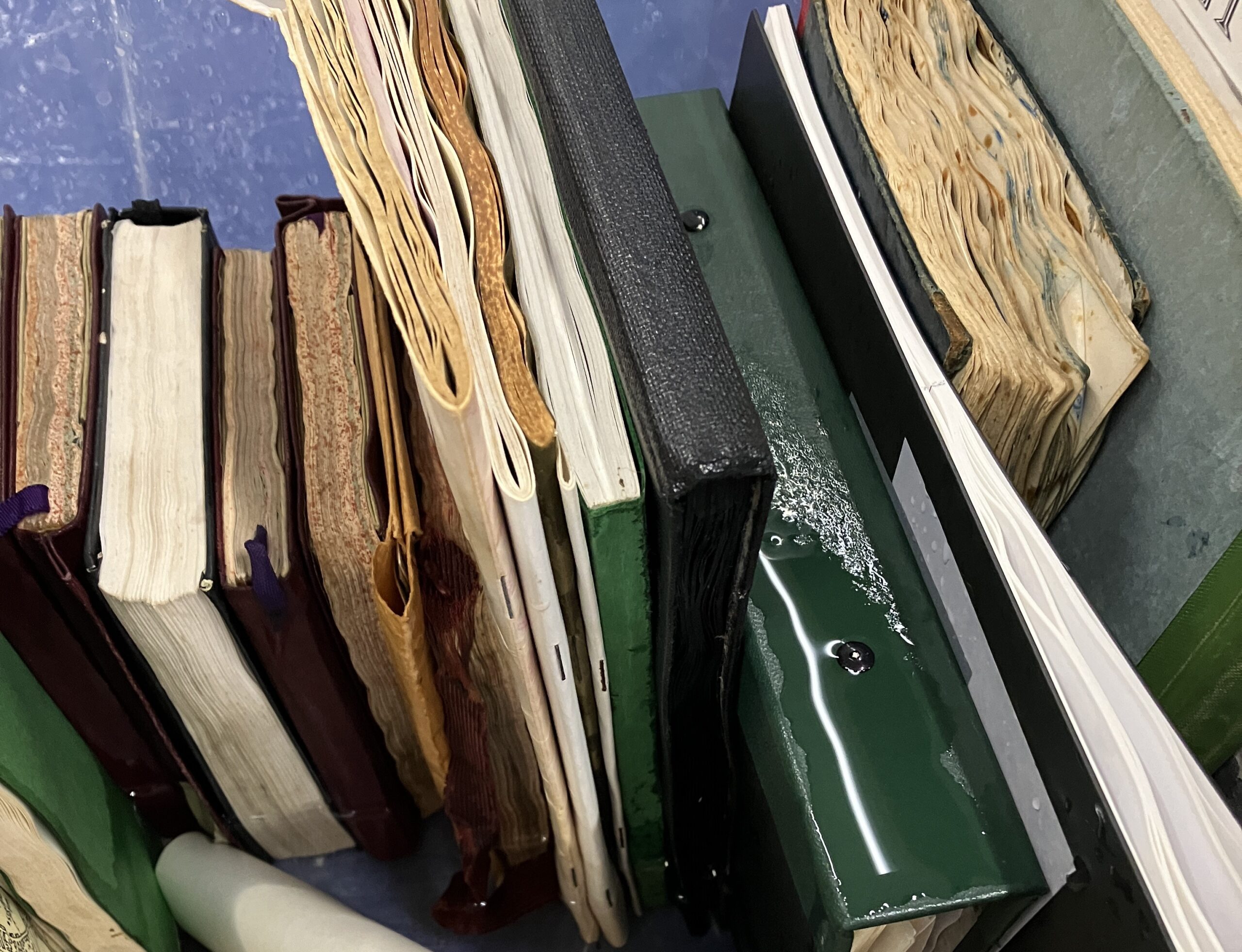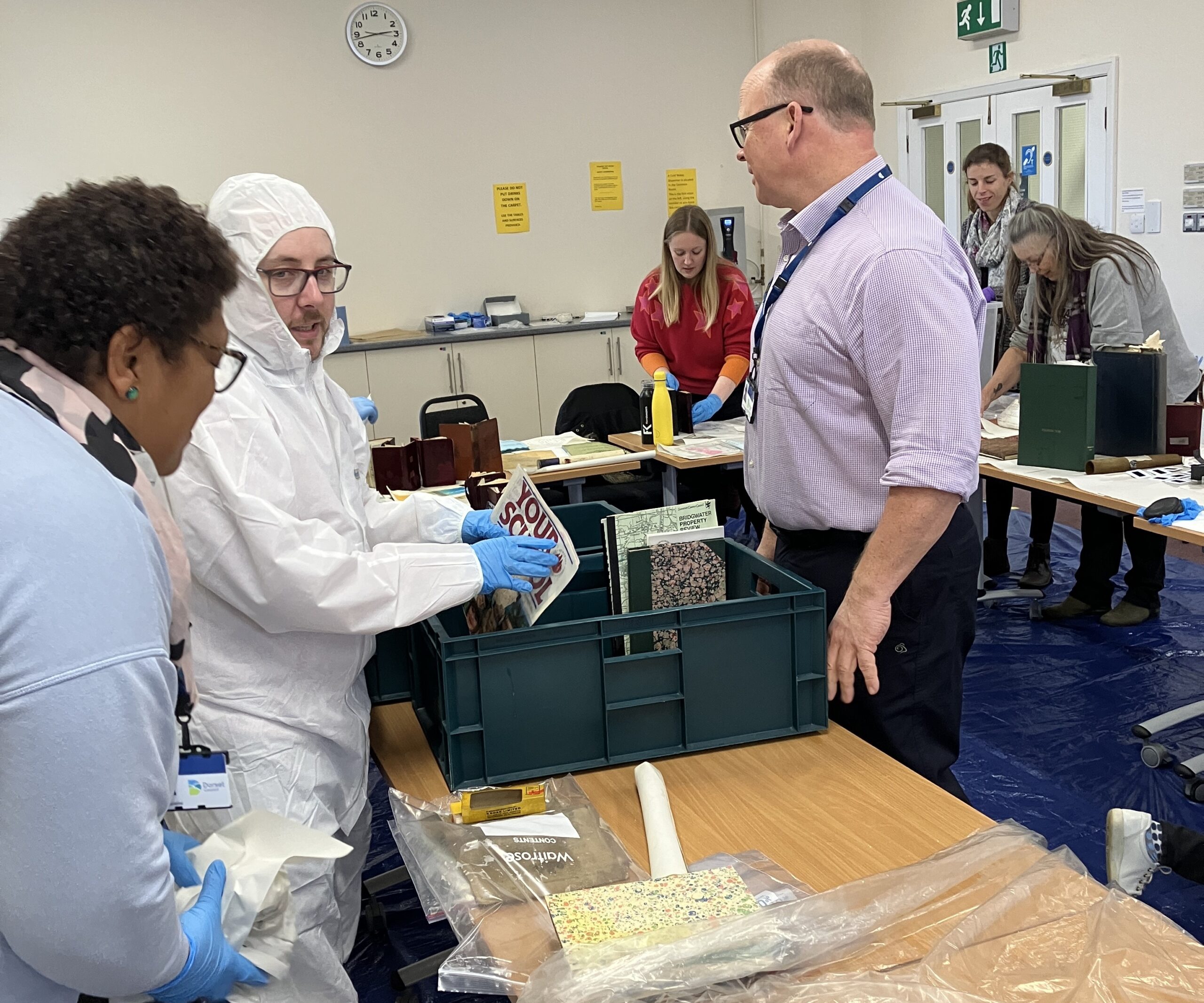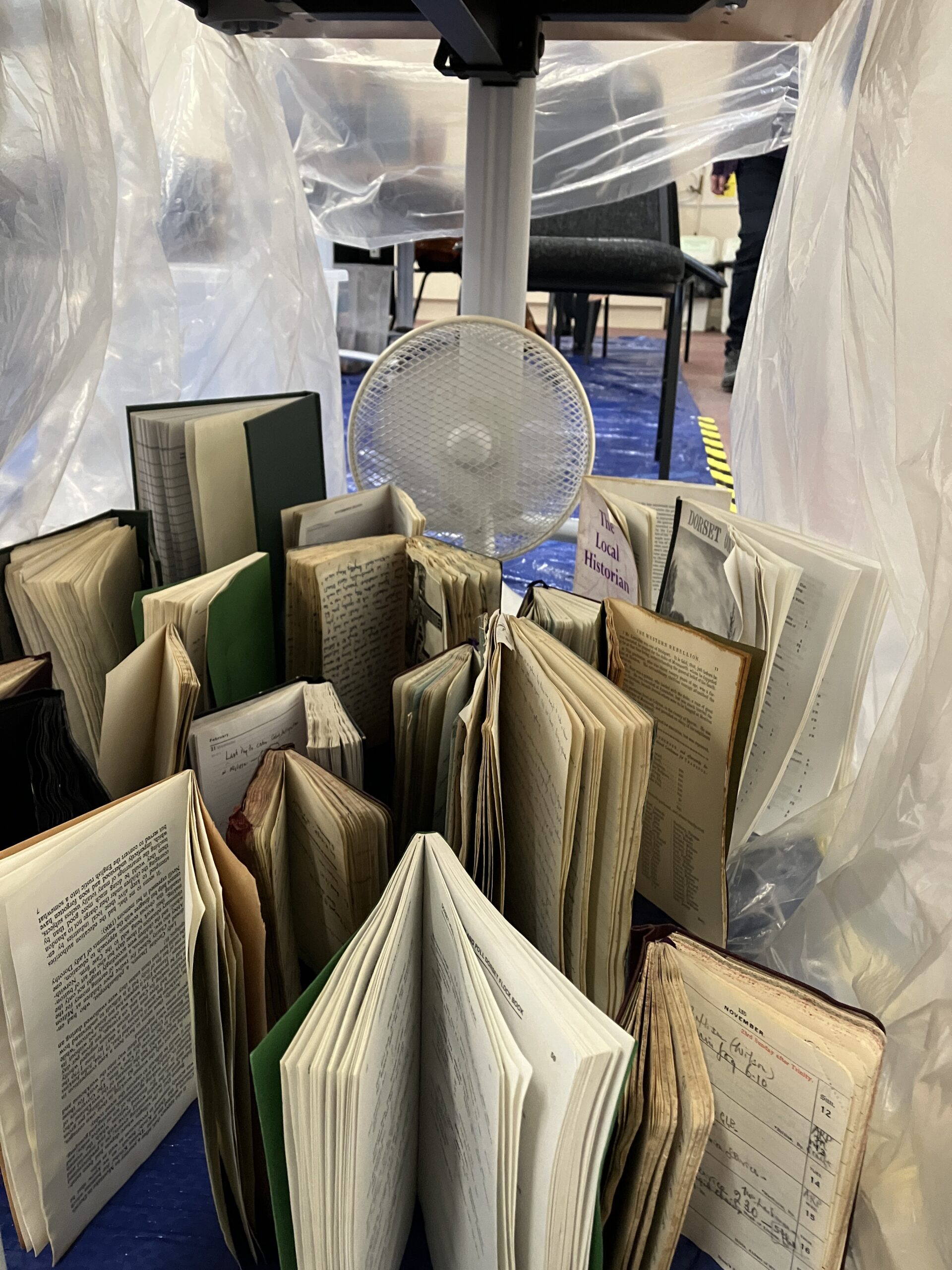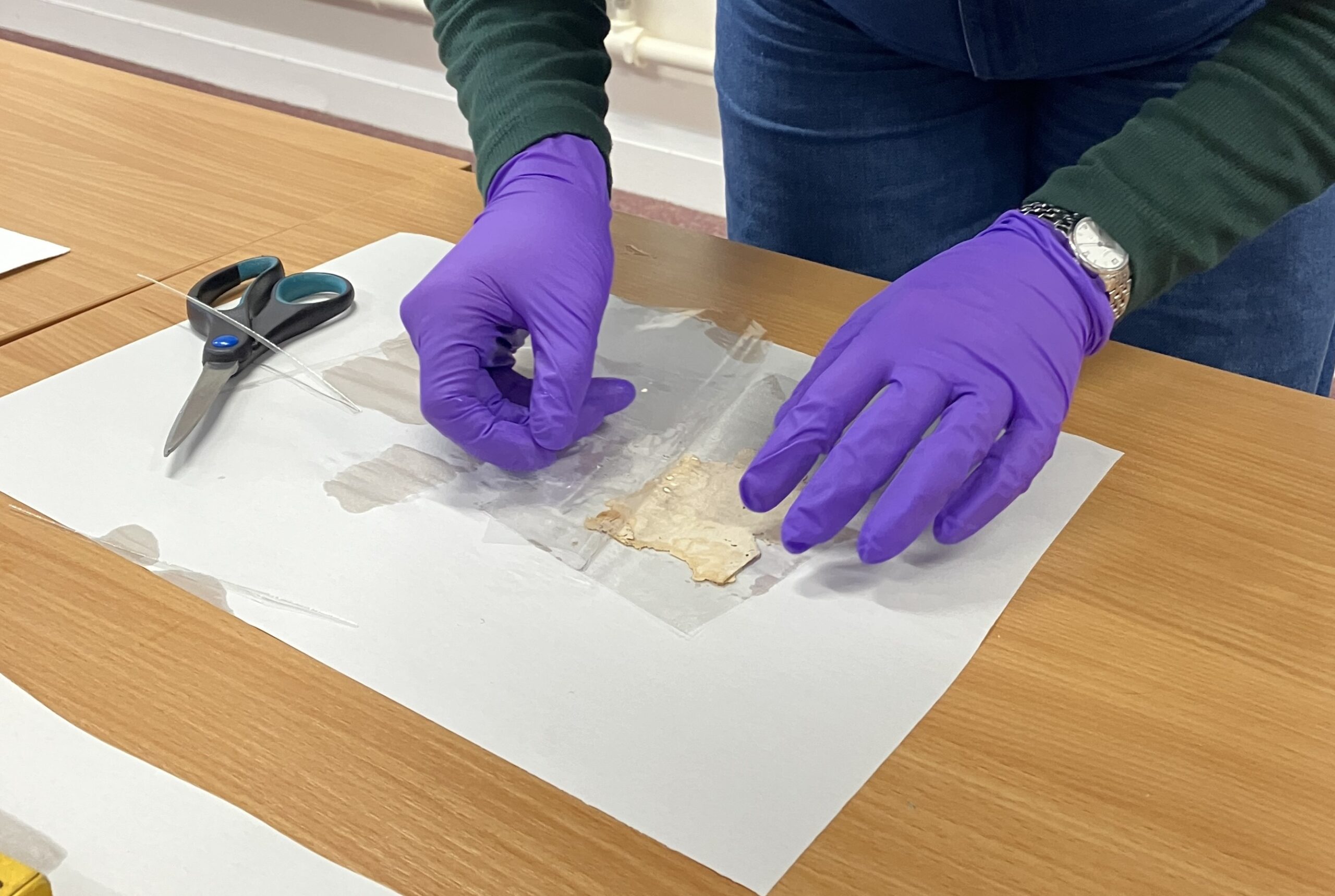Recently staff and volunteers at DHC took part in an Introduction to Salvage training event, and after a very wet couple of months weather wise, the timing seemed particularly pertinent.

So, what is salvage? In collections care salvage refers to the moving and stabilisation of collection items after, although possibly also during, a disaster or emergency situation. This is most commonly a flood or fire, but it could also be a theft, vandalism, terrorist threat, building collapse, basically anything that puts collection items at risk of severe or catastrophic damage such as the complete loss, or loss of use, of an item. As DHC is under a helicopter flight path we could also include that as a risk!
As an accredited archive service DHC has measures in place to reduce the risk of a disaster or emergency occurring. For example, the storerooms that house the collection were purpose built in such a way as to reduce the chance of a disaster happening. The ceilings are tanked and with limited water supply in the storerooms there is a low risk of a flood. Similarly, limited sources of ignition reduce the risk of fire, but a fire suppression system is in place to lessen the damage in the unlikely event of one. Of course, prevention is not foolproof and therefore knowing basic salvage techniques can massively help reduce the impact if a disaster was to happen.

The training started with a presentation that covered what to do during and after a disaster, health and safety risks, and basic salvage techniques for archival material. Then it was time for everyone to get their hands dirty (or wet in this case) and put the theory into practice with a hands-on exercise. Due to the size of the archive if a large-scale disaster was to take place then DHC would require the help of a specialist disaster recovery service, therefore, to make this training as relevant and applicable as possible, it centred on what to do in a minor incident such as a small flood or leak.

Following tips and guidelines from the conservator, crates of wet sacrificial documents were salvaged using materials and equipment from DHC’s disaster supply cupboard. Wind-tunnels were constructed using polythene sheeting and fans to encourage faster air drying of books, while photographs were hung on make-shift drying lines, and fragile paper fragments were carefully removed from their Melinex sleeves and placed between sheets of blotting paper.

It was emphasised that once items are wet it is important to salvage them as quickly as possible to avoid secondary damage, most importantly mould, which can quickly become an issue. Prioritising those most at risk while concentrating on saving as many items as possible, as well as ensuring items are properly documented, can be a difficult task. Add to that list health and safety considerations and the need for an ever-expanding amount of space and resources it is obvious why a salvage operation can quickly become a daunting task. Hopefully the training gave the participants the knowledge and know-how to make it less so!

